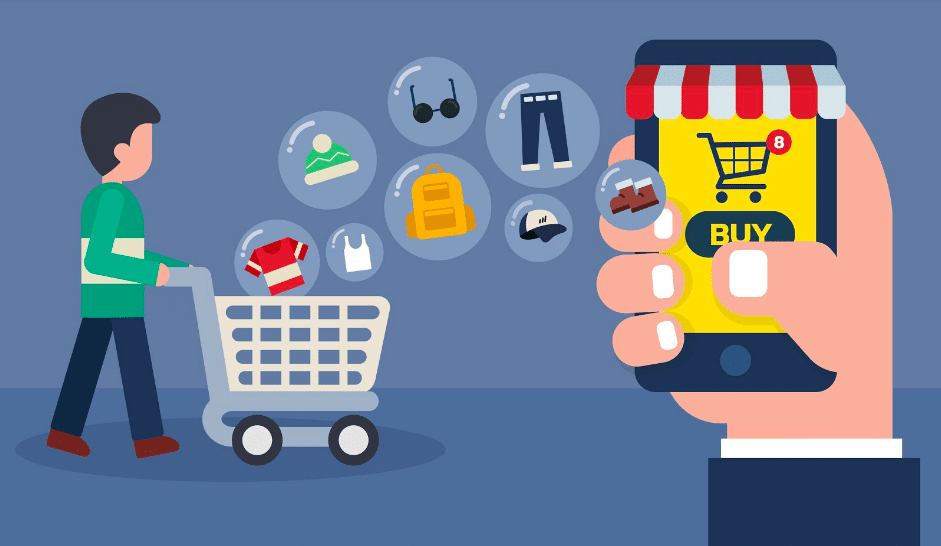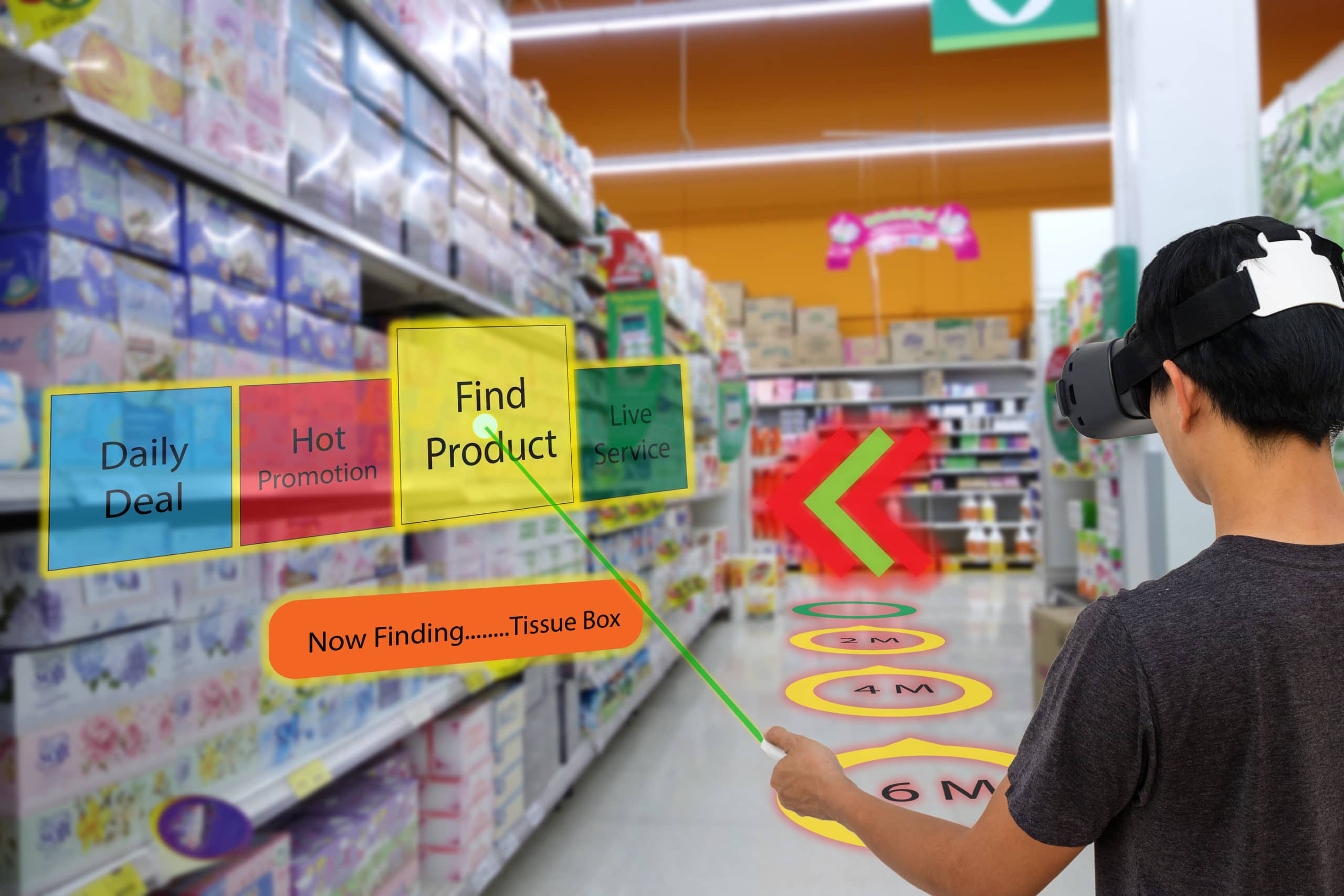Strategic integrated marketing is all about creating a seamless customer experience. Continue reading “Why strategic integrated marketing is the future of brand growth”
Category: b2b
Brand Marketing Best Practices for the Digital Age of Shopping

Brand Marketing Best Practices for the Digital Age of Shopping
Brand marketing best practices in the digital space are all about adaptability. Brands must be able to pivot their strategies in the event campaigns are not performing as well as they should. This strategy requires the ability to break down campaigns into smaller segments—the information technology industry calls this concept agile innovation. By establishing the components of a marketing plan and treating them as separate, distinct steps, brands will be better prepared to change course as needed.
The best practices of marketing are similar across many industries, from CPG challenger brands to multinational QSR locations. These practices cover demographic targeting, message timing, platform selection, and audience engagement. These steps will help a brand build affinity in the right markets while allowing them to pivot as necessary to target new audiences.
Brand Marketing Best Practices: Using Data to Determine Demographics
Often, the success of a new product will be dependent on a small portion of the population. In one study, only about 1.5% of the consumers surveyed accounted for 80% of the purchases of a new product. These results indicate getting consumers to switch brands can be extremely difficult and doing so requires precise demographic targeting.
One issue which can make demographic targeting tricky is when the purchase decision maker and the end user aren’t the same. Consider the case of a breakfast cereal aimed at children. While the intended user of the product is a child, the purchaser of the product will likely be a parent. In this case, the brand needs to decide whose opinion will weigh the heaviest when it comes time to purchase. While the brand may want to primarily market to children, they must also find a way to reach out to the adults who make the purchase.
An excellent example of this strategy is viewed through General Mills cereal brand Lucky Charms. When refreshing the brand, they focused on gaining insight from existing customers on social media to come up with ideas. They sought out recommendations from adults and children alike on the addition of a new marshmallow and decided on a unicorn style. The leaders of the campaign decided to weight the opinions of children more heavily, as they were the target market. However, parents were not left out, it was found that receiving information about the nutritional value of the cereal would make them more comfortable with purchasing the product for children.
The brand targeted two demographics. They focused on children as the primary consumers of the cereal and parents as the decision makers. As such, children enjoyed gamified content while adults received critical information on nutrition. Understanding the diverse demographics for a particular product can also assist in determining the best platforms to reach those demographics.
Brand Marketing Best Practices: Choosing a Platform to Connect With Consumers
Often, brands use a multi-platform strategy to ensure they’re able to reach as many consumers as possible regarding products. Utilizing these platforms together is also an excellent choice for brands with multiple target demographics. Here are a few of the platform options available to brands—aside from their proprietary websites and apps.
Video Platforms
Video advertising offers many advantages for gaining consumer engagement and brand awareness. Video receives 1200% more shares than text- or image-based content, making it an ideal multi-purpose platform. Brands can upload video to platforms themselves and then share those videos across social media or via shopping apps to significantly expand engagement.
Third-Party Apps
A great example of a category of third-party apps that brands choose to work with is shopping apps. These apps allow consumers to gain rewards and other incentives in the store, which drives them to purchase products. This incentivized interaction is a strategy Shopkick uses as it allows brands to reach shoppers when they’re at the store, increasing the likelihood of purchase.
Social Media
Social media is an obvious avenue which many brands use to increase their reach. The demographics of these platforms can be incredibly diverse as well, making them ideal for targeting multiple groups of consumers. Also, many social media sites add unique features which advertisers can use to engage with consumers. An excellent example of this comes from Snapchat, where advertisers use custom-built lenses to build brand awareness.
Search Engine Marketing
In this strategy, brands will provide content on their websites which helps them rank higher on search engines like Bing and Google. SEM is particularly useful when consumers are seeking out a specific solution to a problem. For example, a brand that makes castor oil may target search phrases where castor oil acts as a good solution, like “growing longer eyelashes” or “healing dry skin.” Organic marketing through content allows brands to present their products as solutions, ensuring they are perceived as an authority on that problem by consumers.
These are just a few of the avenues brands should consider when rolling out a new campaign. One of the best ways to determine success is to test smaller scale marketing campaigns on various platforms before rolling out a full-scale campaign. Testing allows brands to find the right audiences which also increases marketing ROI.
Brand Marketing Best Practices: Timing a Campaign to Maximize Sales Conversion
Brands need to consider the two best times to reach consumers; when consumers will buy the products and when they will use the products. After all, consumers rarely go “impulse” grocery shopping. Before their trip to the store, they will probably make a list of the items they need or want. When they get to the store, they will make their final decision on those purchases.
Brands must reach consumers when they’re making their lists as well as when they’re at the store. Using a multi-platform approach is imperative for brands who want to reach consumers during both these critical periods. Standard websites, commercials, and social media can help support marketing efforts as the consumer is planning their shopping trip. Brands can leverage mobile apps which travel with the consumers to connect with them before they make purchase decisions.
Mobile engagement is also supportive for brands that wish to connect with consumers doing their shopping online. Even for CPG products, this is becoming more common, meaning brands must be prepared to support online shopping. When marketing towards digital shoppers, brands do not have to significantly change their strategies, as they can treat the digital shopping space the same way they would a retail space. The main component here is making it very easy for consumers to make purchases online through providing direct links to a brand’s or retailer’s sales pages for these products.
Brand Marketing Best Practices: Leveraging Ways to Engage Consumers in the Digital Space
Even if a brand finds the perfect demographic, creates the campaign at the right time, and releases it on the most effective platforms, these efforts will offer little return if the brand is unable to engage consumers. Engagement can come from a simple share of a piece of branded content to a consumer becoming an active buyer and advocate for the brand. Any positive interaction that occurs will improve the potential of a sale. Here are just a few ways many brands are improving interaction.
Gamification
Gamification is a strategy seen across industries, where marketers take a common task and turn it into a gamified experience. Shopkick provides an excellent example of gamification in action. Using their smartphone, consumers can go on a digital scavenger hunt to find products in the store and scan UPCs. Making a rewards program fun encourages consumers to continue to participate and plan shopping trips around the app. When partnering with apps that offer this, brands can direct the consumers to their product in the store.
Interactive Content
There are many ways brands can get consumers to engage with content, whether it’s merely embedding a poll in a website or video or allowing consumers to drive the story by selecting different marketing options. A campaign by Mended Little Hearts, which is a nonprofit designed to help children with congenital heart defects, shows how interactive components impact sales. The Give a Fuller Life campaign features a video where consumers watch a patient as he goes about his day. As the viewer makes donations, the footage improves and becomes more joyful, offering a heightened emotional return on the content.
Leveraging Influencers
Influencers can help drive engagement for a brand by getting consumers excited about products. Bacardi Australia leveraged this when targeting several Australian communities with its #MojitoMoments campaign. The brand partnered with 60 area influencers who attended events at pubs, clubs, and bars in Australia. The influencers provided content through photos of specific drinks marked with the hashtag and as a result, gained 50,000 engagements at participating locations.
Retargeting for Online Sales
Through the use of cookies, brands can track users who have visited their sites or looked for specific products in the past. They can then use these prior visits to deliver ads which share more information on products the customer previously browsed. This type of engagement has a high potential for sales, as the consumer is interested in these products.
Proximity Marketing
Taking advantage of a consumer’s location when near products works well for improving sales in brick-and-mortar locations. For example, through mobile advertising, a brand can pinpoint a consumer’s location and let them know of deals relating to their products which may be in the consumer’s immediate area. This strategy is one many brands are leveraging through the use of beacons and other location technologies.
Rewards
Rewards provide a better alternative for brands that don’t wish to use discounts. By offering rewards points (or in Shopkick’s case, kicks) brands provide a return on shopping without the need to give a discount. Rewards programs frequently have a higher perceived value than just their dollar amount, as they create an emotional connection between a brand and a consumer.
These are just a few ways to drive consumer engagement with a brand. By encouraging a consumer to interact with content, brands can build affinity, sales, and—in the long term—increase market share. Engagement is a critical component of any marketing initiative, so brands must be prepared to foster this.
Brand marketing best practices in the digital space should be broken down into demographics, platforms, timing, and engagement to ensure a brand is easily able to pivot should the strategy not prove successful initially. Using multiple strategies can help to boost audience awareness and improve engagement. These strategies can be adapted to improve sales in stores as well as online. The best brand marketing practices ensure consistent visibility and enhance sales potential for the life of a campaign.
Shopkick helps our partners improve the reach of their campaigns by connecting them with an active audience of household purchase decision makers through an innovative app. For more information about becoming a partner, contact us.
3 effective brand recognition strategies for eCommerce retailers

Today’s eCommerce retailers need to be prepared to go further than simple brand recognition strategies; they must create brand affinity. Continue reading “3 effective brand recognition strategies for eCommerce retailers”
Back to School Shopping Habits: Survey Results

It may feel like the school year just ended and that summer is finally in full swing, but the back-to-school shopping season has already crept upon us. Back-to-school is the second largest shopping season of the year, and parents are already prepping. Continue reading “Back to School Shopping Habits: Survey Results”
The top 3 retail digital marketing strategies to launch a new CPG product

CPG brands can face significant challenges in launching new products, as these traditional products require decidedly non-traditional retail digital marketing plans to ensure success. Continue reading “The top 3 retail digital marketing strategies to launch a new CPG product”
3 in-store marketing strategies to support the shopper’s path to purchase

In-store marketing is a critical avenue for CPG brands who traditionally have trouble gaining attention in the store due to a highly competitive market. Continue reading “3 in-store marketing strategies to support the shopper’s path to purchase”
Effective shopper marketing examples from the top retail giants

Augmented reality marketing campaigns and rewards programs are shopper marketing examples used by brands that have been found to improve sales. Continue reading “Effective shopper marketing examples from the top retail giants”
The importance of video marketing for your business in 2018-2019

The importance of video marketing doesn’t lie in your brand’s message but instead in your ability to improve the customer experience. Continue reading “The importance of video marketing for your business in 2018-2019”
5 video marketing tips to engage and enthuse an audience

5 video marketing tips to engage and enthuse an audience
Video marketing offers high engagement and conversion. By using newer options like interactive video, mobile apps, social media, and incentives, brands can expand the impact of any video advertising or marketing message. Marketing managers seeking video marketing tips should consider these emerging avenues to reach consumers and get them to try a product.
The benefit of video marketing campaigns is the ability to use multiple channels to gain engagement for one video. By working with available platforms and partnering with third-party apps, your brand can get its video content in front of new users who may not be familiar with your products. These five video marketing tips will provide brands with better ways to expand the reach of their content and improve marketing ROI.
Video Marketing Tip #1: Adding Interactive Components to Video
Making video interactive—having viewers participate in driving the story—is an excellent way to increase engagement with a message. An interactive video can be simple, like in the case of a poll embedded in video content. Alternatively, these videos can be complex, immersive virtual reality experiences. Interactive elements within a video include the following.
Encourage Active Watching
Encourage active watching: When a consumer must make selections or click on portions of the screen, they’ll be more likely to watch the video actively. This active watching means they will also be more likely to retain the video’s message and remember a brand.
Create a Personalized Connection
The interactive components of video create a connection with consumers that regular video does not, as the consumers drive the story. This involvement helps to develop a relationship between the viewer and content, making it appear that brands are not advertising at them, but rather working with them.
Gather Consumer Information
A common interactive component of video is a poll. Through these polls, brands can gain insight into viewers, how the content appeals to them, and other information that will better help market to the right audience.
Interactive video offers an additional opportunity to grab the consumer’s attention and get them to engage with branded content. Video that features interactive components can both help advise brands on future marketing decisions and offer immediate brand awareness and affinity.
Video Marketing Tip #2: Make It Mobile for the Most Interaction
Mobile video is a must for brands that want to reach consumers on the move. The most recent data indicates that mobile video accounted for 60% of all mobile traffic and this number is expected to increase. Selecting platforms that support mobile video—whether you’re purchasing ad space before primary content or releasing your own branded content—is critical.
Another added benefit of optimizing for mobile video is the ability to control the timing of a message to reach consumers on the move. A consumer out shopping, as an example, may see a mobile video ad for a quick-service restaurant in their immediate area and decide to stop by for dinner. The proximity of the video watcher to the product increases the chance of purchase, making mobile video a strong sales driver. In addition, mobile allows brands to extend their reach to consumers who may not have Internet access through a desktop computer. It’s very common in emerging markets—like India or China—that some consumers only access the Internet via their mobile phone. By making video mobile-friendly, you can reach a wider base of consumers in these markets.
Video has become the preferred type of media for consumers and mobile is the place they choose to view it. To ensure you’re able to make the most of this trend, a brand must make sure their video content is optimized for a mobile platform.
Video Marketing Tip #3: Gather a Crowd Through Social Media
Social media is a great place for video sharing, whether you choose to use it as the native platform or host content elsewhere and share the video to your social sites. It offers an opportunity to make a brand’s message trend while providing a reasonable ROI from your marketing efforts. Social media offers three basic ways to share a video message, outline below.
Organic Engagement
Organic engagement comes as a result of ads which aren’t outright advertising—like a how-to video or customer testimonial—and it’s the content itself that drives consumers to share these posts.
Paid Ads
On social media, paid video ads generally come before primary content, or as sidebar video content. Depending on the social media site, the paid content can blend in with the user-generated content and attract customers without seeming like an ad.
Influencer Marketing
Another category of social media video marketing comes through influencer marketing. In this case, the brand doesn’t create content themselves but instead relies on a popular social media personality to share information about their product.
While companies don’t have to buy ad space to create organic engagement, there are costs to be considered such as the cost of creating the content and building buzz. As such, while organic engagement has no media costs, it’s not a free marketing avenue. Costs of creating content and pushing engagement by connecting with users of the platform can be extensive.
When it comes to influencer partnerships, these arrangements can either be free or paid, and the cost depends on how many followers these individuals have. On the lower end of the spectrum, brands often use micro-influencers with smaller followings as the individuals are willing to provide reviews in exchange for free samples or nominal fees. Online celebrities—like those with tens of thousands of followers across multiple sites—generally work under sponsorship contracts similar to what celebrities receive.
Social media can boost the reach of your video marketing by getting the content in front of more viewers. As sharing and commenting on videos is common, this also improves engagement, which expands brand awareness and affinity.
Video Marketing Tip #4: High Tech AR and VR Components Build Buzz
Augmented and virtual reality components are growing in popularity. The primary issue slowing down the development of AR/VR content is the accessibility of hardware. These types of headsets can be very expensive for consumers, as they primarily come as add-ons to expensive gaming consoles. Most recent estimates indicate shipments of virtual and mixed reality headset shipments are expected to grow by 68.9% by 2022. This is a market that is ripe for expansion, so brands should be looking at AR/VR video content options in preparation for a surge in demand.
For now, brands that wish to leverage the buzz-building potential of AR or VR video can offer experiences via a consumer’s smartphone. While the combination of video and AR is still emerging, we’ve already seen some excellent examples of this type of media in action. This strategy is one a Parisian luxury fashion brand used with great success. When promoting a new line, the company used AR as a way of sharing 360-degree video and fashion shows with consumers who were in the vicinity of stores. This immersive content spurred interest in the line while also creating an intriguing experience which gained extensive press coverage.
Of course, the ROI on most video AR campaigns isn’t clear, as this is a very new area of mobile video marketing. Over time, the removal of cost barriers will allow brands to find many creative ways to use high-tech features in video ads.
Video Marketing Tip #5: Rewarded Video Boosts Results
Another video marketing option for brands is rewarded video programs. Rewarded video allows brands to gain views while also creating a connection with consumers. These rewarded experiences work by offering the consumer non-tangible benefits (like rewards points or in-game items) in exchange for a few moments of their time. This rewarded viewing is a common feature of shopping apps, like Shopkick. Providing consumers with rewarded video offers several benefits including the following.
Limiting Discount Dependency
While many CPG brands will typically look to discounts to incentivize customers, rewards offer a higher benefit. The brand does not have to take an immediate loss on the product and consumers will perceive rewards as more valuable than discounts, due to their emotional return.
Higher App Retention Rates
Rewarded video has proven retention rates for apps. In one study, more than half of users that watched only one rewarded video within the first week after downloading an app kept that app for at least 30 days. That rate is 300% higher than the average retention rate of a non-rewarded video app. Simply incentivizing viewing is enough to boost app retention rates, which are a key part of any mobile video campaign.
A/B Testing Opportunities
Brands can use rewarded video as a way to test out which media will be better to deliver on a mass scale. As an example, a brand offers two rewarded video options to consumers. Based on which video consumers choose more often, the brand knows this is the preferred choice. They can then share that video on social media and other platforms, ensuring they’re getting the highest ROI based on the consumers choice.
Increased Completion Rates
In a regular video ad—like a pre-roll ad—a consumer may choose to skip or ignore the ad. In rewarded video, the consumers only received the rewards after viewing the complete video. This requirement significantly improves video completion rates.
Improved Brand Affinity
When a brand gives incentives for engagement, this creates a connection with the consumer which can be used to improve the overall perception of a product. The consumer views the video advertisement as a benefit and not a disruption.
There are many benefits to adding rewarded video to a marketing campaign. It offers an opportunity to both reach consumers directly, improves the perception of your brand and retention of both branded apps and third-party app partnerships.
There are many video marketing tips for brands that wish to engage consumers with this popular form of media, but not all are appropriate for every brand. Higher-tech options like AR and VR may not be cost effective for smaller brands, while brands with massive followings may find that interactive content is too difficult to manage when dealing with a large audience. The best results come from using a variety of options to gain the most engagement for your marketing dollar.
Shopkick offers an engaging app which allows our partners to leverage the power of mobile video, shopping rewards, and more. For more information, contact us.
In-store mobile app usage is skyrocketing; Is your brand ready?
In-store mobile app usage is quickly replacing many of the traditionally available services in brick-and-mortar locations. Continue reading “In-store mobile app usage is skyrocketing; Is your brand ready?”
The three best video marketing platforms to launch your new brand/product

There’s not just one best video marketing platform for every brand. Continue reading “The three best video marketing platforms to launch your new brand/product”
Marketing a product launch: Engaging ideas from apps to Z

There are several apps available that offer features that can assist in marketing a product launch. Continue reading “Marketing a product launch: Engaging ideas from apps to Z”

